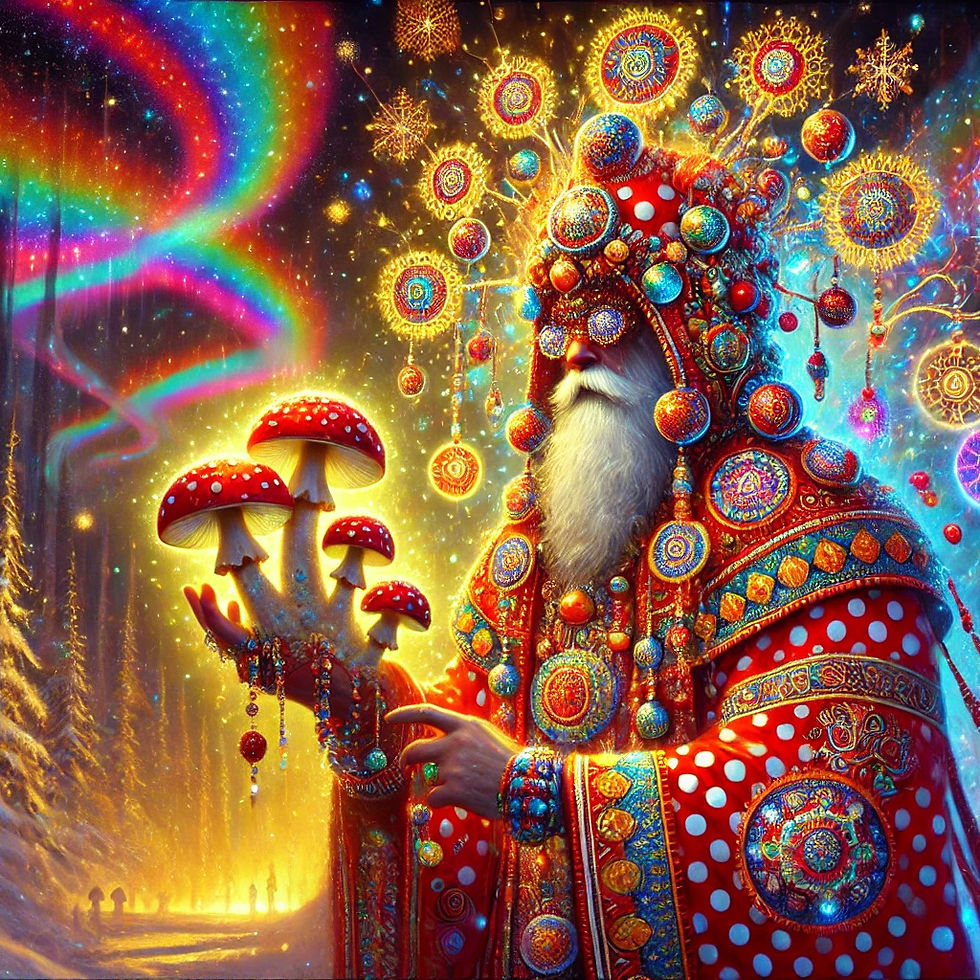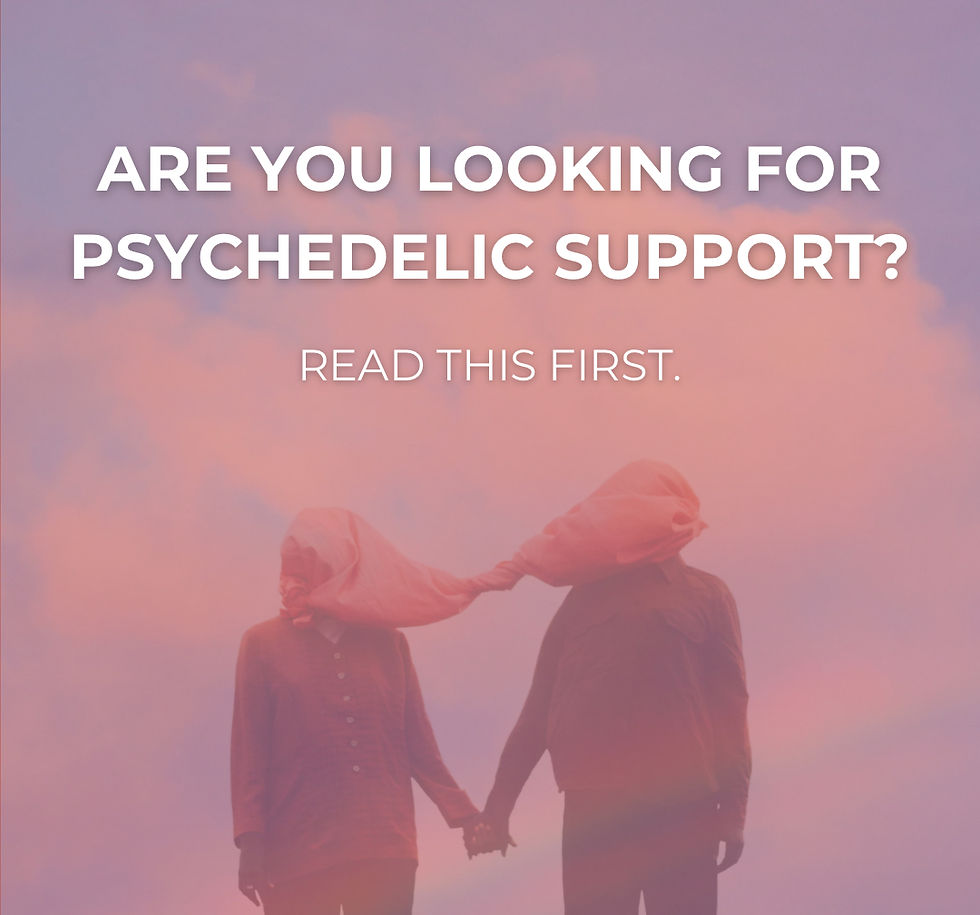Shamanism, Neurodiversity, and the Season of Light: Honoring Christmas, Hanukkah, the Solstice, and Kwanzaa
- Colette Condorcita Schmitt

- Dec 25, 2024
- 4 min read
Updated: Jul 21

As the world celebrates a convergence of traditions—Christmas, Hanukkah, Kwanzaa, and the recent winter solstice—we reflect on the shared roots of these holidays. Beneath the layers of ritual and story lies an ancient recognition of the interconnectedness of light, darkness, transformation, spirituality, interpreting nature, and our understanding of human consciousness.
Rooted in pagan solstice rituals, Torah writings, and shamanic traditions, these observances offer profound lessons for the neurodiversity paradigm of human consciousness. By exploring their intersections, we can integrate diverse ways of perceiving the world into modern systems of healing, innovation, and inclusion. By blending ancient wisdom, the emergence of psychedelic medicine, with Western scientific methods, we can open pathways to better understanding altered states of consciousness, resilience, community integration and meaning-making, and the diversity of human minds.
Shamanic Neurotypes and the Modern World
Shamanic Neurotypes—individuals whose unique neurological wiring allows them to access altered states of consciousness with and without entheogens—have played vital roles in communities throughout history. These neurodivergent visionaries, often serving traditionally as healers, guides, and mediators, helped their communities navigate transitions and transformations.
In Arctic traditions, shamans adorned in red and white robes symbolized their connection to the sacred Amanita muscaria mushrooms, which facilitated altered states and spiritual insights. These practices resonate deeply with the emerging concept of neurodiversity, as they honor unconventional ways of experiencing and understanding the world. Yet, in a modern world dominated by neurotypical frameworks and scientific objectivity, these unique abilities are often misunderstood or undervalued. Colonialism further marginalized shamanic traditions, dismissing their wisdom as against the European colonial narrative. Today, there’s an urgent need to integrate shamanic practices, concepts, and neurodivergent perspectives into contemporary systems of understanding, not only to better honor human consciousness but also because of the sudden increase in psychedelic use.
The Solstice, Torah, and Pagan Rituals
The Winter Solstice in the Global North, the longest night of the year, has long symbolized death and rebirth. Ancient pagan rituals celebrated the return of the sun and the cycles of life, often with fire, feasting, and community gatherings.
The Torah writings that accompany Hanukkah reflect similar themes. The menorah’s miraculous light represents resilience and transformation, reminding us of the enduring power of faith and community. These traditions align with the solstice’s emphasis on hope and renewal, offering metaphors for the neurodivergent experience of navigating challenges and thriving despite adversity.
By embracing the light in the darkness through solstice rituals or Hanukkah teachings, we honor the diversity of human consciousness and the cycles of growth that connect us all.
Integrating Shamanism with Western Science
Bridging shamanism and Western science involves honoring the experiential depth of shamanic traditions while applying the analytical tools of modern research and the scientific method. This integration creates opportunities to unlock new understandings of altered states, neurodivergence, and the human mind.
Here are key approaches to this integration:
1. Expanding Research Frameworks:
• Using neuroimaging tools like fMRI to map brain activity during shamanic trance states or natural altered states.
• Collaborating with Indigenous practitioners and neurodivergent individuals to document their experiences and insights.
• Studying the long-term impacts of rituals such as drumming, chanting, and entheogen use on mental health, neuroplasticity, and suggestive states of consciousness.
2. Developing Holistic Healing Models:
• Combining shamanic practices with evidence-based approaches, such as integrating ceremonial frameworks into psychedelic-assisted therapy.
• Exploring the therapeutic potential of entheogens like psilocybin and Amanita muscaria in clinical settings.
• Designing rituals and tools that help individuals integrate altered-state experiences into practical life changes.
• Teach psychedelic users how to understand the scientific method and associated frameworks for how to take difficult, altered states of consciousness and integrate them into the here and now. This can be helped by understanding perspectives in psychology, the unconscious mind, trauma, and the scientific method.
3. Creating Inclusive Spaces for Neurodivergence:
• Build educational and therapeutic systems that honor diverse cognitive styles, inspired by shamanic adaptability and holistic thinking.
• Encouraging community programs celebrating neurodivergent strengths, such as heightened sensory awareness or visionary tendencies.
4. Blending Subjectivity and Objectivity:
• Combining personal and communal aspects of shamanism, and its integration with human consciousness, with empirical research.
• Highlighting storytelling, metaphors, and rituals as valid ways of interpreting complex neurological and psychological phenomena.
Shamanism, Neurodiversity, and the Science of Integration
The Neurodiversity Paradigm aligns deeply with shamanism by recognizing the value of diverse perspectives in healing, innovation, and community building. Just as shamans guide their communities through darkness and light, neurodivergent individuals today offer unique insights into resilience, creativity, and collective transformation.
Through the integration of shamanic traditions and scientific methods, we can:
• Develop a deeper understanding of consciousness and its role in healing and innovation.
• Create inclusive systems that embrace diversity as a strength rather than a deviation.
• Build practical tools to translate insights from altered states into actionable practices for daily life.
Honoring the Season and Bridging Traditions
As we celebrate Christmas, Hanukkah, Kwanzaa, and the solstice, we are reminded of the shared power of light, resilience, and community. These traditions inspire us to honor the diversity of human experience and the interconnectedness of ancient and modern wisdom. At Neurodelics, we believe in the power of integration—bringing together the timeless practices of shamanism with the cutting-edge tools of Western science. By celebrating neurodiversity and the richness of human consciousness, we create a future that honors both individuality and collective strength.
Merry Christmas, Happy Hanukkah, a Joyful Solstice, and a Meaningful Kwanzaa from all of us at Neurodelics! May this season inspire unity, reflection, and the integration of wisdom across all traditions.
Explore Neurodelics Today:
• Subscribe to Our Newsletter to stay in the loop and receive your guide on self-directed neuroplasticity.
• Learn About Our Platform and discover upcoming courses, community spaces, and more.




Commentaires